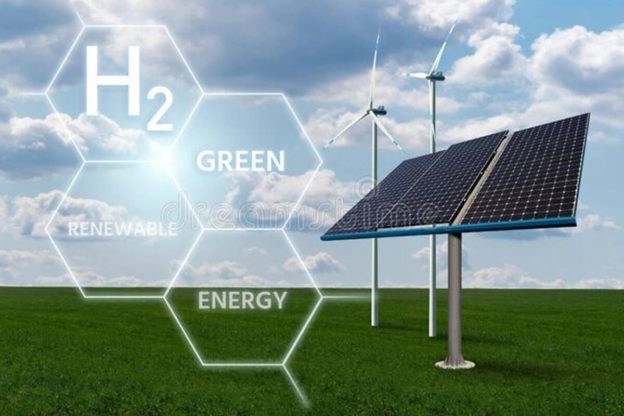The National Green Hydrogen Mission could facilitate the country’s transition to clean energy, reduce dependency on fossil fuels and help the country turn net zero.
Budget 2023 gave a fresh thrust to India’s transition to clean energy. “Rs 35,000 crore in priority capital investment towards energy transition and achieving India’s goal of net zero carbon emission by 2070,” announced finance minister Nirmala Sitharaman. An additional Rs 19,700 crore was sanctioned towards the government’s National Green Hydrogen Mission.
ALSO READ: Explainer | Reliance is betting big on green hydrogen. What is it and why is it important?
2023 had already started with a bang, with the Government of India sanctioning Rs 19,744 crore for the mission. Under it, India plans to increase its annual green hydrogen production to 5 million tonnes by 2030, reduce dependence on fossil fuel imports and cut greenhouse gas emissions by nearly 50 million tonnes. The eventual goal, though, is to turn the country into a hub for green hydrogen production to meet global renewable energy demands.
So, what is green hydrogen, and why is there so much hype about it lately? Let us unpack the term as well as its implications for India.
Clean it up We need an increasing amount of watts to function every day. According to the International Energy Agency (IEA), global energy demand is expected to rise by 1.3 per cent each year till 2040. India will contribute 25 per cent of this demand. In such a scenario, if a country is dependent on coal and oil, it would only exacerbate climate change. It would also make it difficult to turn net zero.
Decarbonising the planet is one of the goals that countries around the world have set as part of the Paris Agreement. For this, a different world is needed. One that is green and sustainable by 2050, and driven by clean energies. Enter hydrogen.
Hydrogen is an abundantly available chemical element in nature. It has a long relationship with industry. It is already used for refining petroleum, treating metals, steel manufacturing, producing fertiliser, and processing foods. Global demand for hydrogen reached 94 million tonnes in 2021, as per the IEA.
But not all types of hydrogen are created equally. Despite being colourless,= it is labelled in a variety of colours, each representing a method of production, and it has its own emission output. The three main ones are:
Grey: Produced by combustion of natural gas. This method emits CO2 into the atmosphere, though it is less than what is emitted by black or brown hydrogen which is dependent on coal.
Blue: This low-carbon hydrogen is produced by splitting methane from natural gas. It can only be labelled clean if methane leaks are kept to near-zero levels and the carbon is captured and permanently stored underground.
Green: Emissions-free hydrogen that is produced using an electrolyser, which is powered by renewable energy.
As part of the Net Zero Emissions Scenario 2021-2050, hydrogen and hydrogen-based fuels could avoid up to 60 gigatonnes of CO2 emissions by mid-century – equivalent to 6% of total cumulative emissions reductions, according to the IEA.
Going green Most experts agree that green hydrogen will be essential to meet the goals of the Paris Agreement. Why? Energy efficiency, renewable power, and direct electrification can reduce emissions from electricity production and a portion of transportation, but some industries such as aviation, shipping, concrete and steel manufacturing, among others, are difficult to decarbonise completely. These sectors require high-energy density fuel or intense heat.
Green hydrogen can help meet these needs. It is 100% sustainable, storable and versatile (you can transform it into electricity or synthetic gas, and use it for commercial, industrial or mobility purposes). But it is also high cost, volatile and the production of green hydrogen requires more energy than other fuels.
In 2021, much of the increase in hydrogen demand was met by hydrogen produced by unabated fossil fuels, which means there was no benefit in mitigating climate change. But there are several low-carbon hydrogen projects being planned, some of which are at an advanced stage.
As per the IEA, if all these projects are brought online by 2030, low-carbon hydrogen capacity could reach 16-24 million tonnes annually, with green hydrogen from electrolysis accounting for 9-14 million tonnes and blue hydrogen accounting for between 7-10 million tonnes. Meeting governments’ climate pledges, however, would require 34 million tonnes of low-emission hydrogen production per year by 2030; a path compatible with reaching net zero emissions by 2050 globally would require around 100 million tonnes by 2030. The shortfall is significant.
Make the most India hopes to address this gap. It has set a goal of becoming energy independent by 2047 and turning net zero by 2070. To get there, green hydrogen has a critical role to play. So the country is scaling up its renewable energy production capacity, and looking to capitalise on the opportunity to produce green hydrogen for the world.
The National Green Hydrogen Mission is one step in this direction. It intends to provide a thrust to the energy sector. While the goal is to facilitate deployment of the green hydrogen ecosystem and create opportunities for innovation and investments across the value chain, it will also translate into investments, jobs and economic growth.
It could set India on a path of sustainable development, and accelerate green growth. It’s why there is so much focus on it.
https://www.moneycontrol.com/news/environment/explainer-budget-2023-why-india-is-betting-big-on-green-hydrogen-10009061.html/amp





